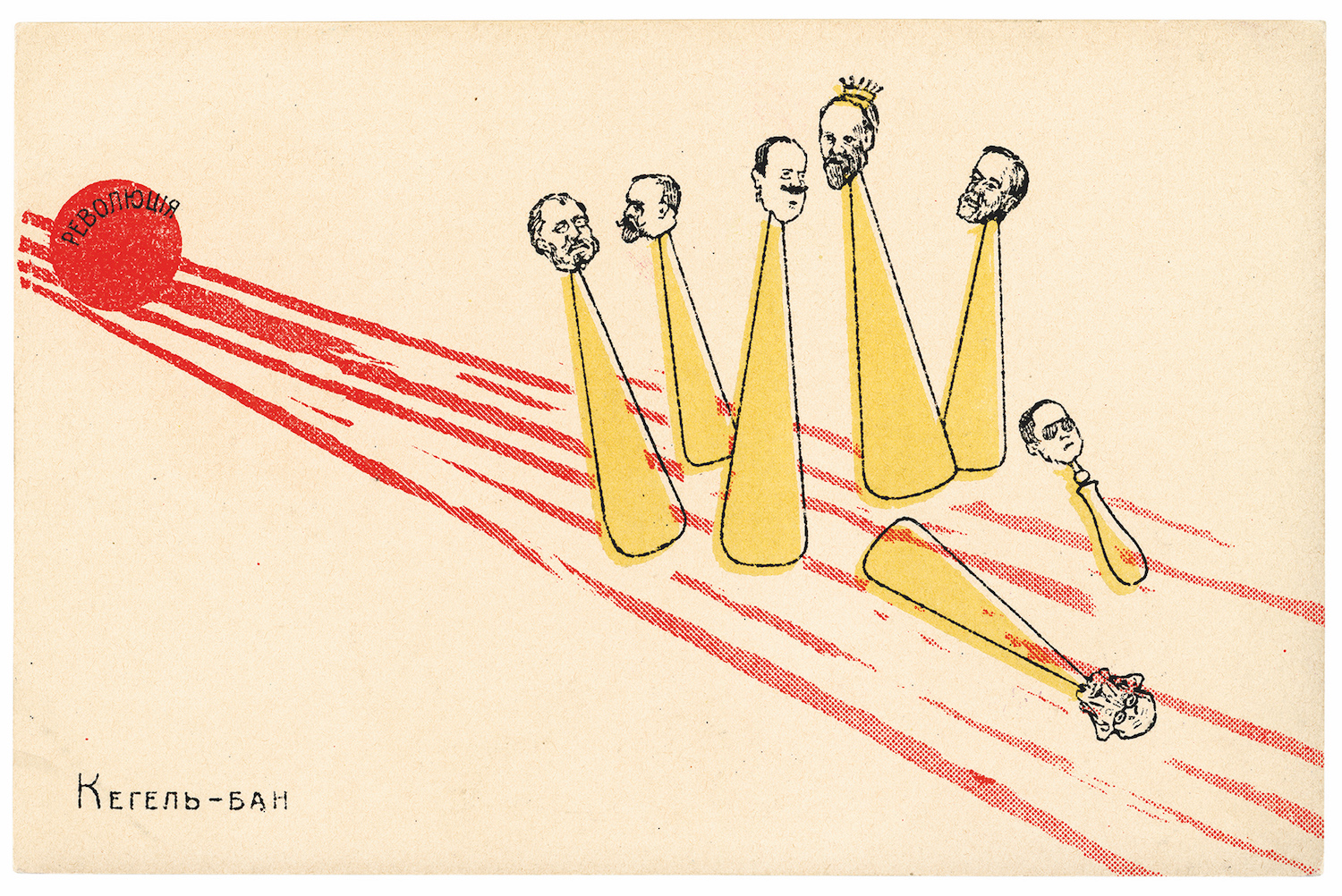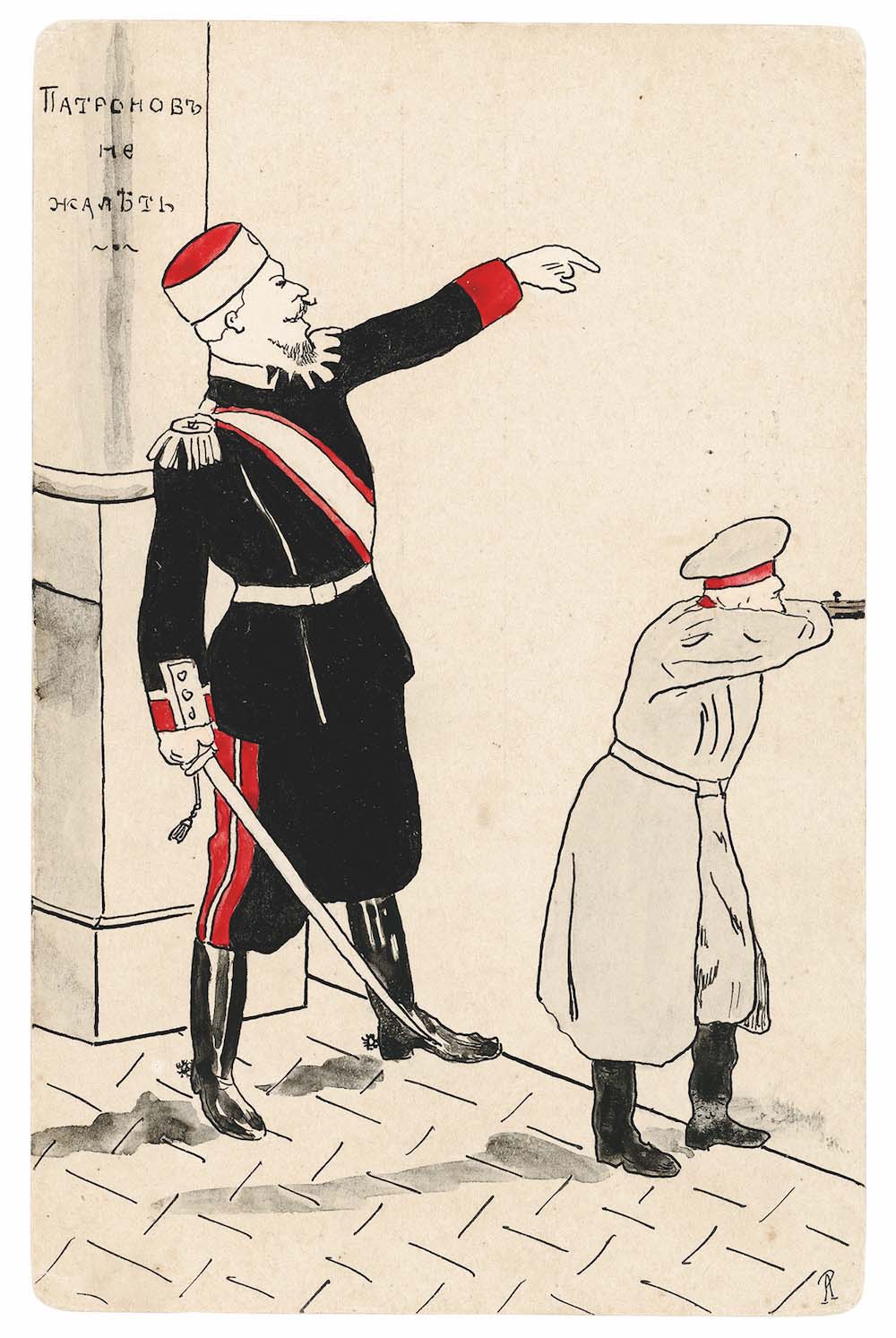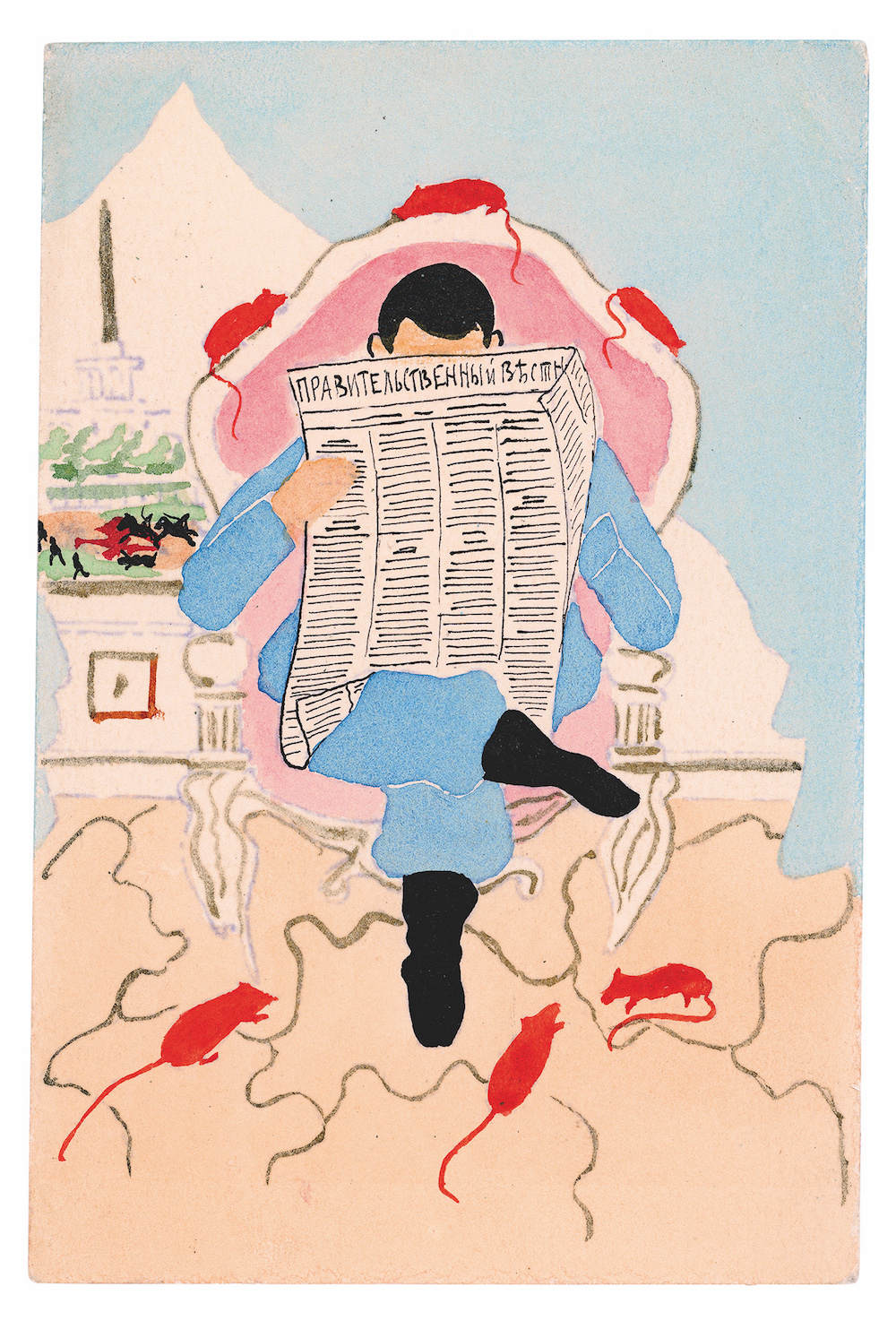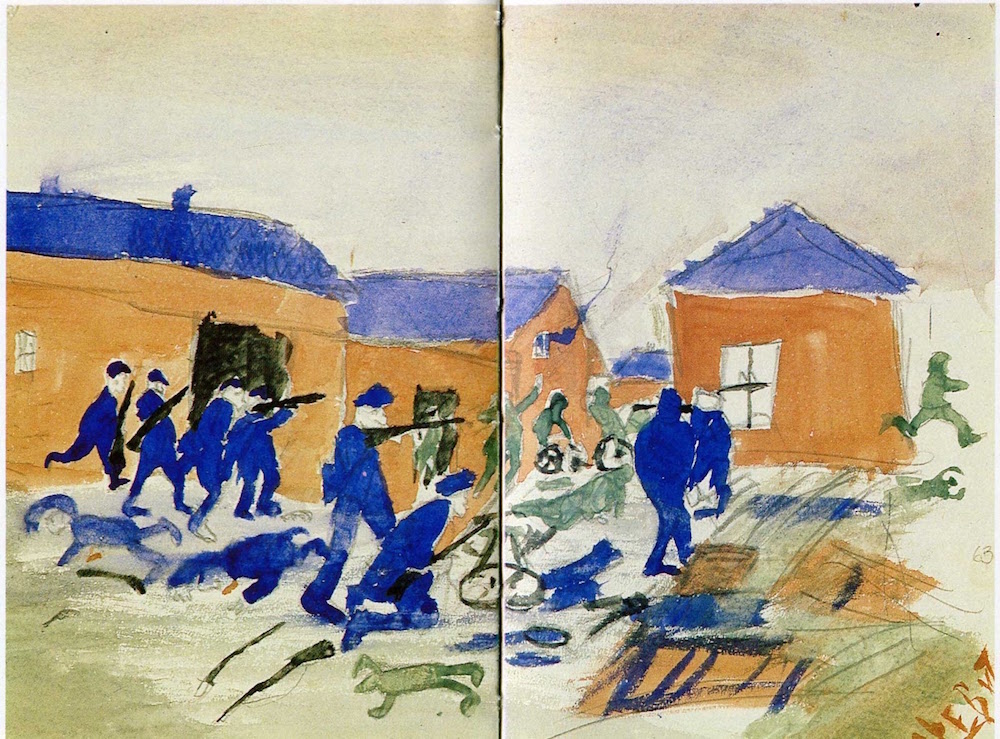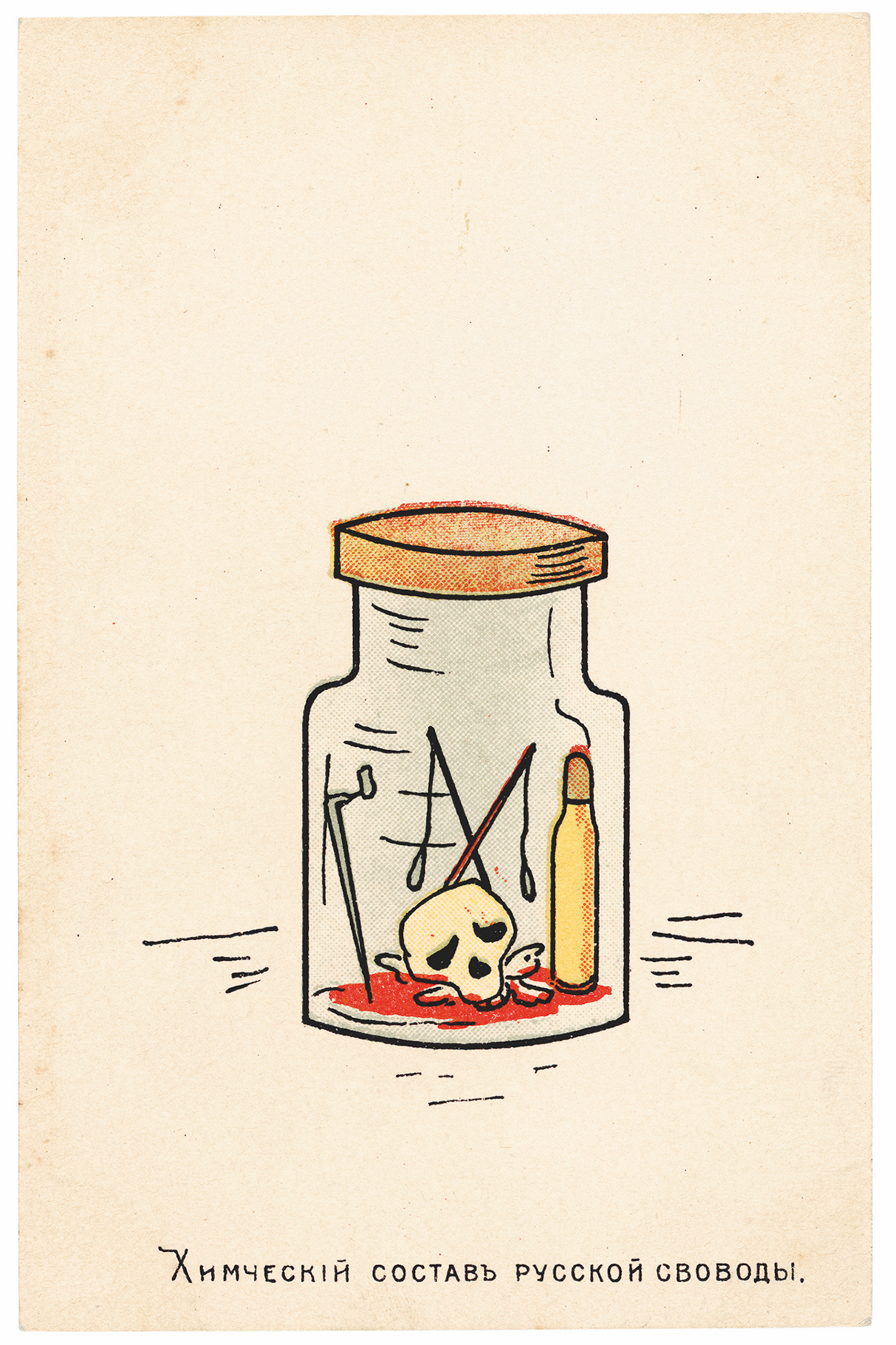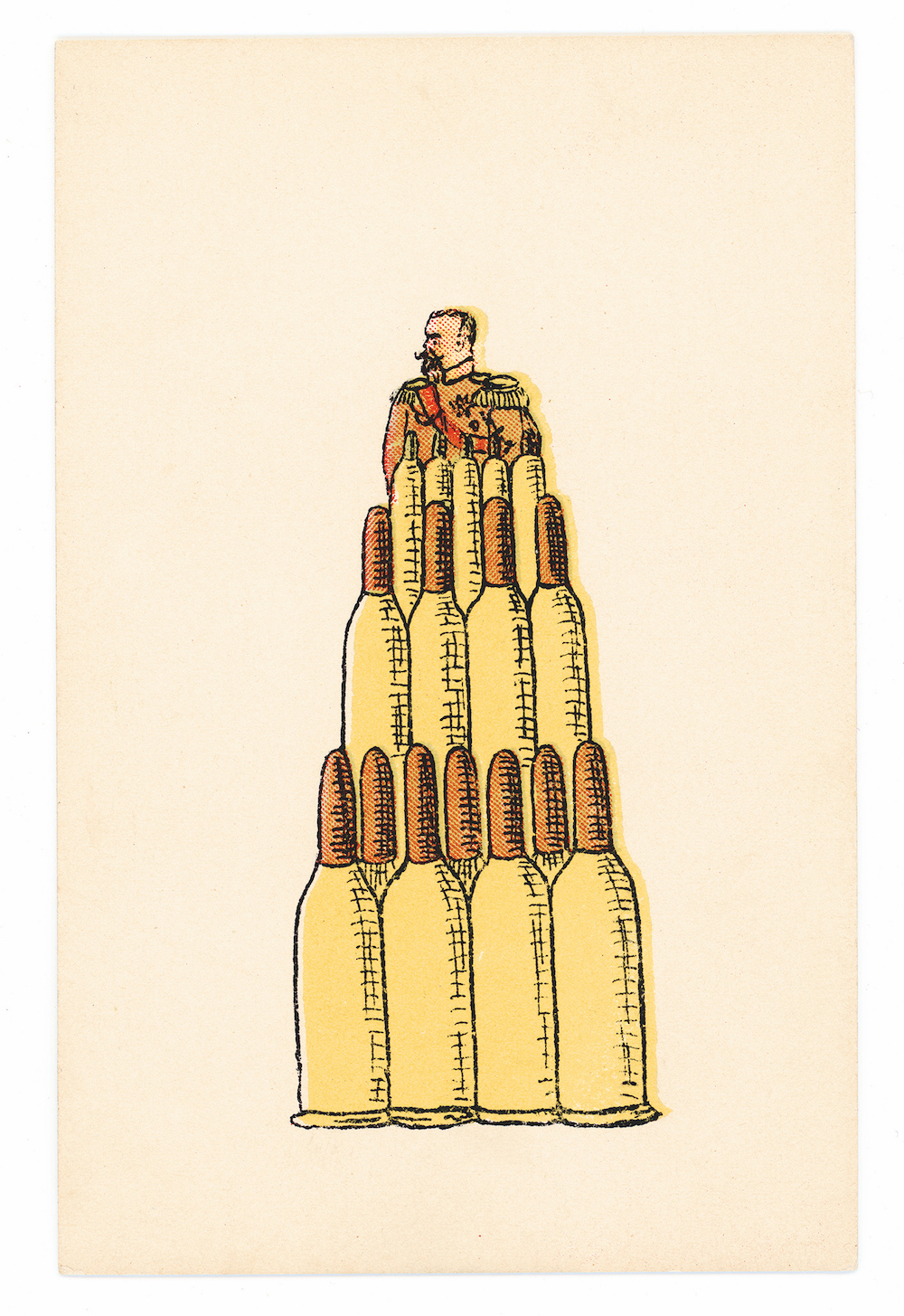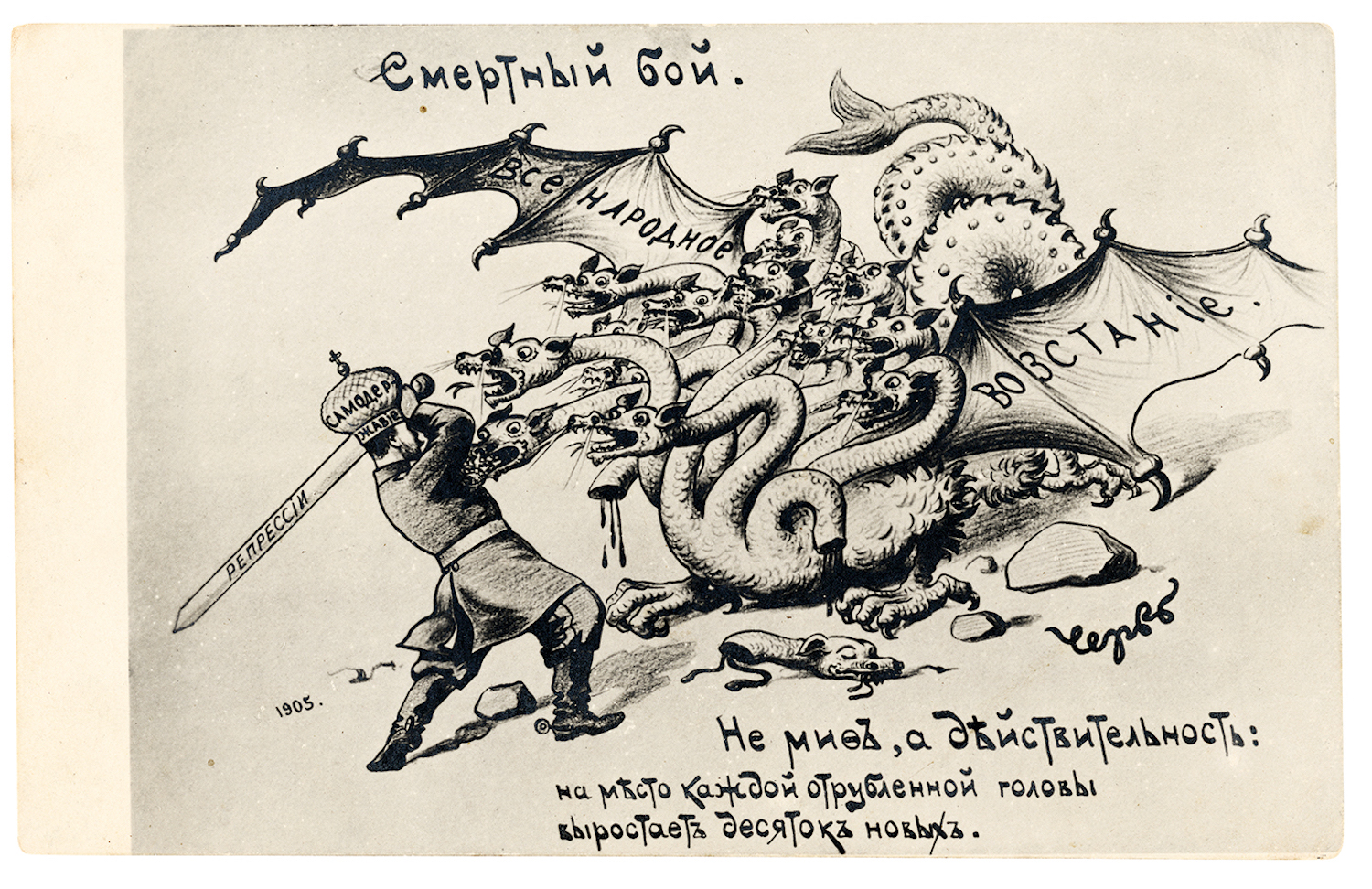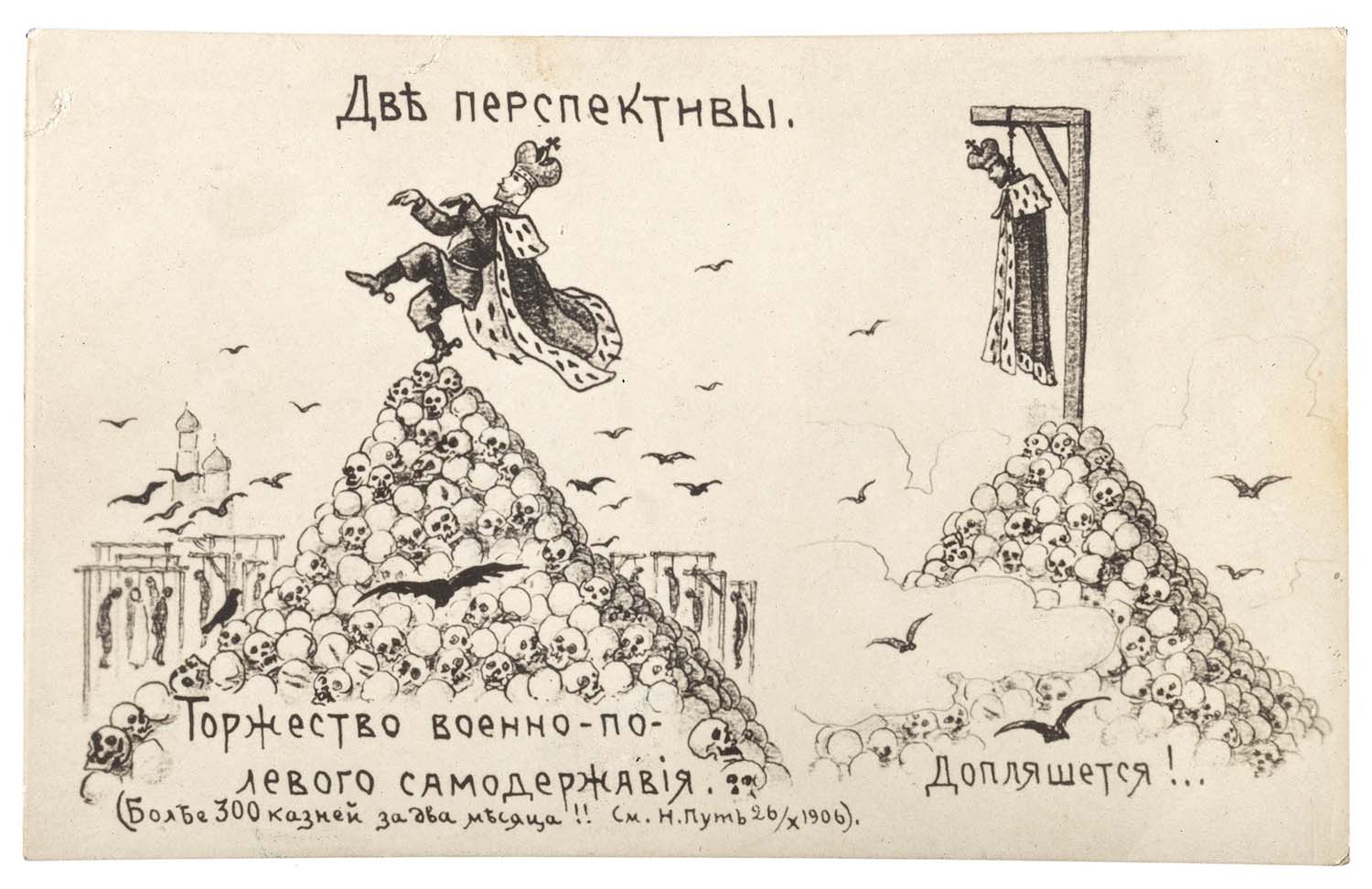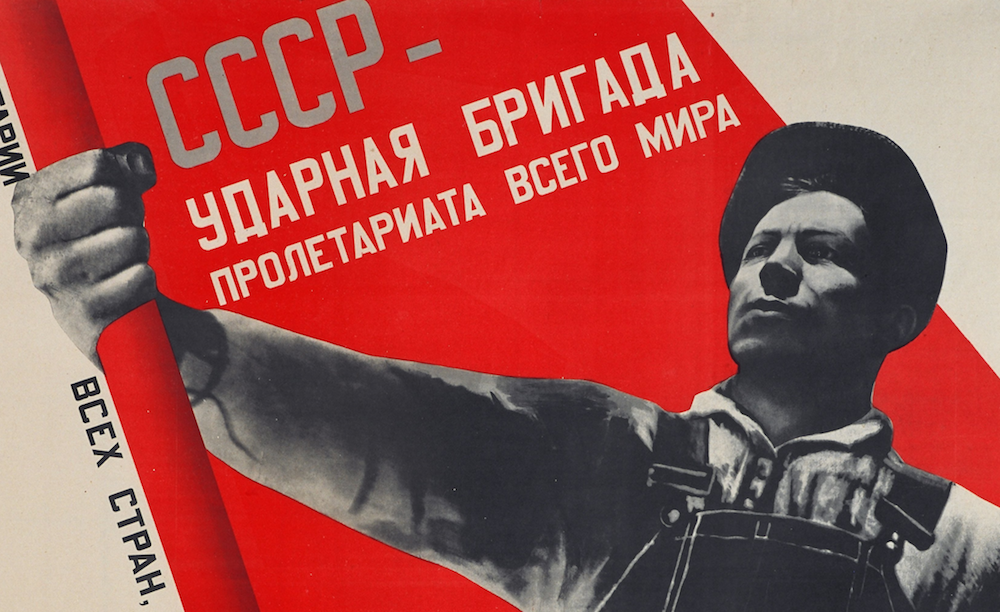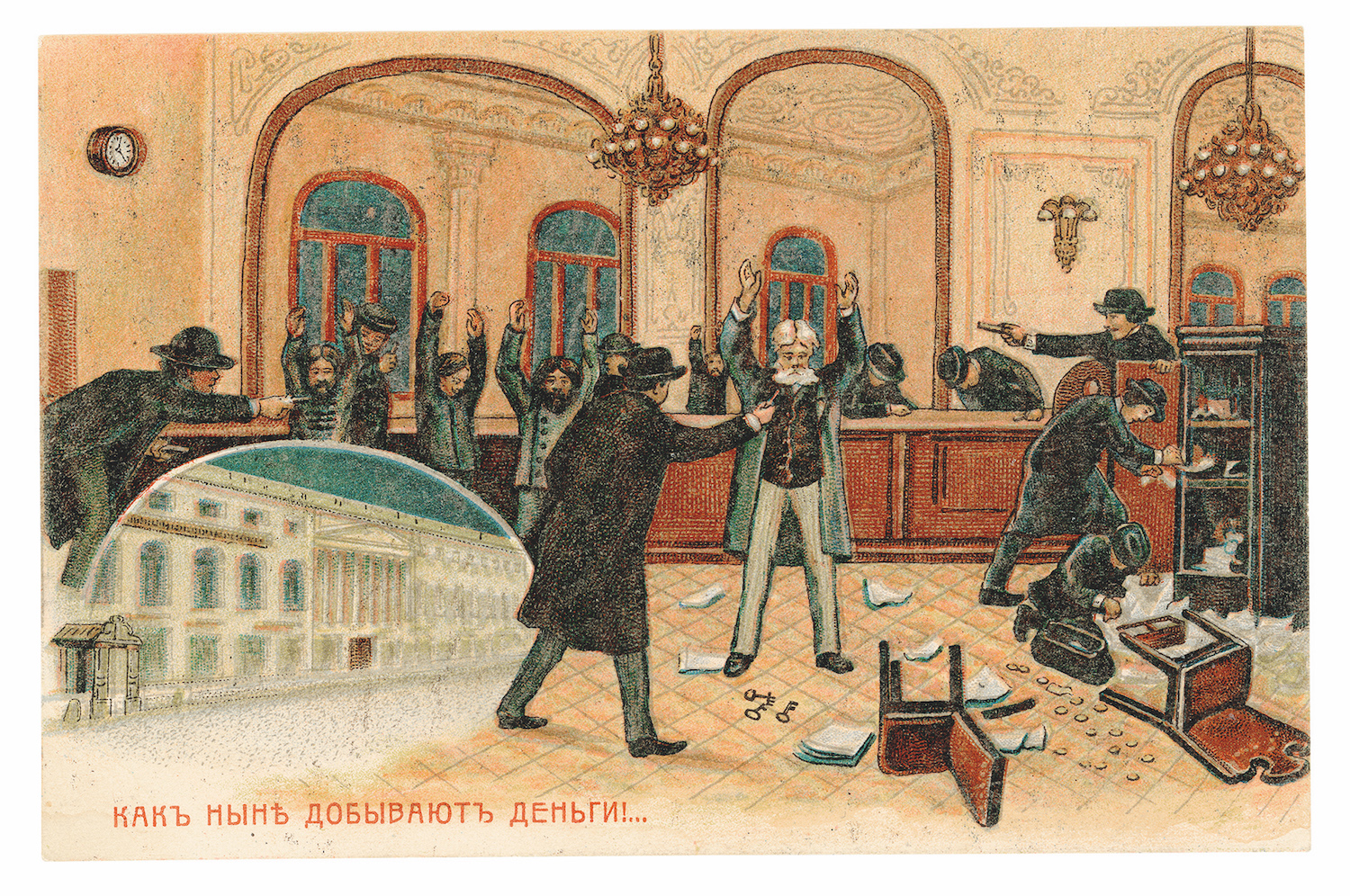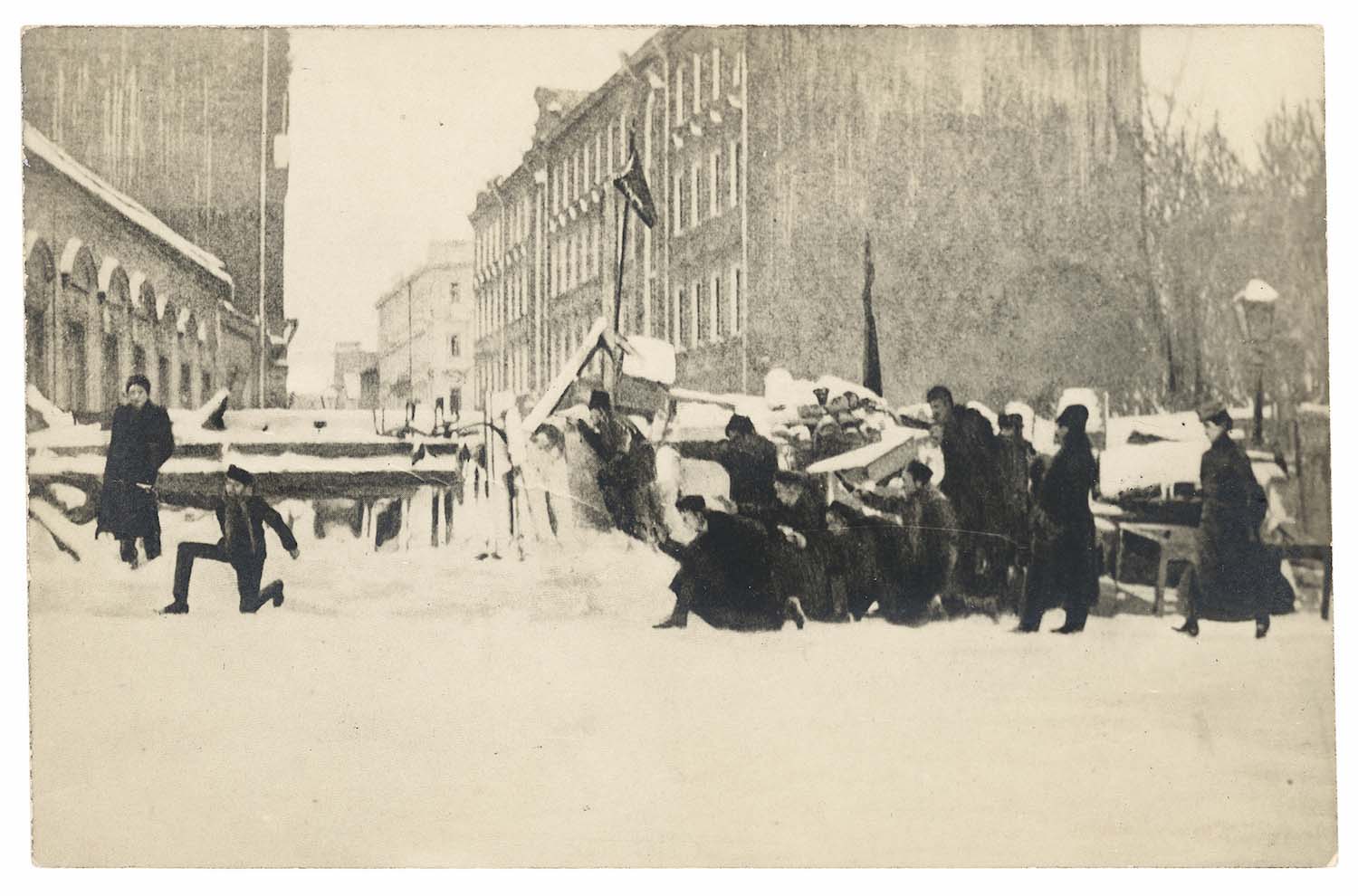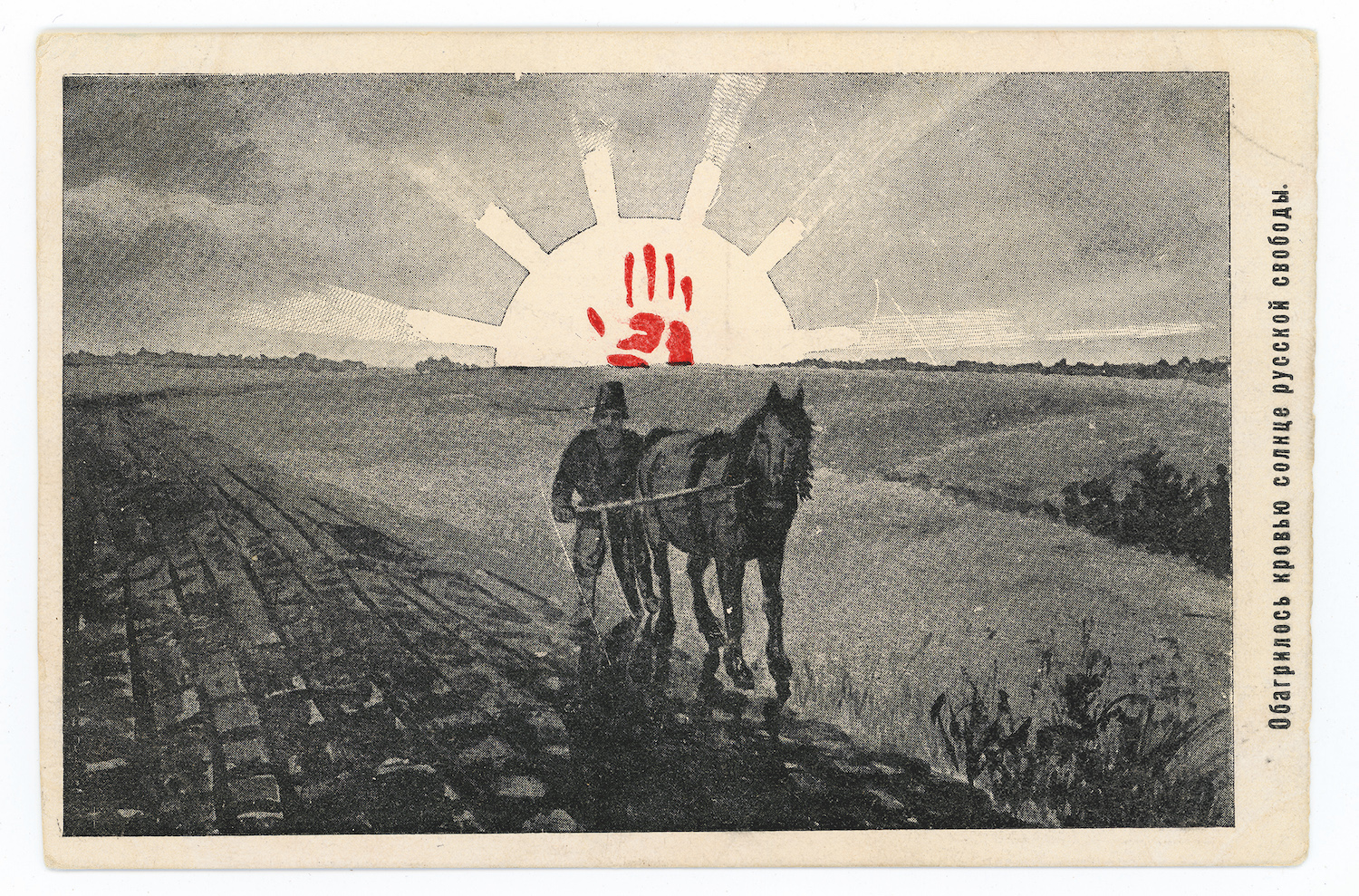Revolutionary postcards: trace the fate of one anti-tsarist caricaturist and his seditious images
Writer and journalist Tobie Mathew’s Greetings from the Barricades explores the history of Russian picture postcards, which opponents of the Tsar came up with as a way of beating censorship and inspiring defiance in the early 20th century. Read an exclusive extract of the book
Writer and journalist Tobie Mathew’s Greetings from the Barricades explores the history of Russian picture postcards, which opponents of the Tsar came up with as a way of beating censorship and inspiring defiance in the early 20th century.
Mathew first became interested in these images, which range from photographs to cartoons, when he started collecting pre-1917 postcards while living in Russia — and his book is full of the beautiful and evocative illustrations. In this edited extract, he describes the hunt and arrest of Mikhail Chemodanov, one of the gifted artists involved in producing postcards during the 1905 revolution.
“It’s too late for me to fight on the barricades, but I can still provide overhead fire”
Early on 1 May 1906, Tsarist police arrived at the Moscow residence of a twenty-five-year-old masseuse named Antonina Romanova. A few weeks previously, postal workers had intercepted a letter sent to Romanova from Nizhny Novgorod. The letter’s contents, which included a fake passport and an unsigned note, had led the Okhrana to believe that Romanova was sheltering a wanted revolutionary by the name of Aleksei Pavlov. When the premises were searched, Pavlov was nowhere to be seen; instead, the police discovered a bonanza of revolutionary propaganda. Alongside an abundance of pamphlets, leaflets, and newspapers, they also found eighteen packets of anti-government postcards, as well as another twenty-one loose images. Inside each of the packets was a receipt reading: “Three roubles received in aid of political exiles and prisoners. M. M. Chemodanov.”
Doctor Mikhail Chemodanov was one of Russia’s leading dental practitioners, regularly attending to the needs of the Moscow elite. But behind the façade of a respected medical professional, he had long nursed a hatred of autocracy. He was no fanatical idealist, but a compassionate and kindly man who had seen the injustices and deprivation of the Russian Empire at first hand. He also happened to be a gifted caricaturist.
Chemodanov had first started contributing drawings to satirical journals while still at medical school in the late 1870s, and for a while, he had nurtured hopes of becoming a professional illustrator specialising in anti-government satire. However, the pressures of censorship and the need to support his young family eventually pushed him to abandon the idea. Instead, he chose to dedicate his career to what was then the new discipline of dentistry. Over the following decades he wrote a book, edited a specialist magazine, and was involved in organising the first Russian dental school. By February 1904, when Russia went to war against Japan, he had become the most famous tooth specialist in the country. But while medicine was always central to his life, it never quite eclipsed his fervour for satire. As he once said, “there are many good doctors, but few caricaturists.”
The Russian army soon became bogged down in the Far East and as the internal political situation began to deteriorate, Chemodanov determined to resume his struggle against the regime. “I’ve decided to start drawing again,” he told friends, “it’s too late for me to fight on the barricades, but I can still provide overhead fire.”
Sometime in mid-1905, Chemodanov was introduced to Dmitrii Peschansky, the owner of a photographic studio in central Moscow. With the encouragement of local Social Democratic activists, Peschansky had consented to start reproducing Chemodanov’s drawings in postcard form, at last providing an outlet for the subversive political satires that he had been making throughout the year. The images were then sold across the city by an organised network of revolutionary helpers.
At the time Romanova’s flat was raided in May 1906, Chemodanov’s postcards had already been in circulation for a number of months, but the evidence that the police found there was the first to link him directly to the images. As a result, Romanova was arrested and the hunt for Chemodanov began. Eighteen days later, police officers searched the home of suspected revolutionary Nina Morozova, and her three flatmates Vasily, Vyacheslav, and Vladimir Kalashnikov. Morozova was found with several items of illegal literature, and twenty-four “postcards denigrating the person of the RULING EMPEROR.” Student Vladimir Kalashnikov, meanwhile, was caught with forty-seven pre-addressed packets, thirty-one of which contained postcards with “revolutionary content.”
Three distributors of Chemodanov’s postcards had now been detained and a warrant for his arrest was duly issued. Chemodanov, however, was nowhere to be seen. In fact, he was not even in Moscow, but in Yalta. A couple of years previously, he had developed chronic bronchitis, a legacy of his days as a country doctor. In a bid to improve his health, he had gone south for a few weeks to enjoy the warmer climate. Wisely, he had not informed anyone where he was going.
Over the previous 18 months, Russia had experienced an unprecedented period of strikes, demonstrations, and political violence. The unrest, which had been triggered by a government massacre of petitioning workers, had culminated later that year with a general strike, which forced the government into granting concessions, among them the promise of a legislative assembly and nominal press freedom. These reforms, however, did little to placate the population, and in December 1905 there was a full-blooded uprising in Moscow. Only after its brutal suppression did the tide begin to turn, and in the months that followed, the autocratic state set about reasserting its grip.
Chemodanov left Moscow again in the autumn of 1906, this time for the Caucasus. On his return in October the atmosphere in the city had become noticeably more stifled and he now began to sound “notes of alarm” in his conversations. Earlier the previous month, lead-distributor Nikolai Druzhinin had been caught attending a revolutionary meeting. The police had searched Druzhinin’s flat and subsequently put him under official surveillance. Another of Chemodanov’s distributors, a twenty-year-old hereditary noble named Boris Yevreinov had also been detained. More seriously, he was found with Social Democratic Party documents, several packets of postcards, and a letter addressed to Chemodanov containing compromising information.
As the nights were drawing in, the noose was tightening and Chemodanov was right to be feeling nervous. A few days after his return, the Moscow Administration of Gendarmes had sent a secret communiqué to the Okhrana asking for instructions on carrying out a search of his flat. On 11 November, the Okhrana sent out an alert to all policemen in Moscow, demanding that they make the “most strenuous efforts” to detain the distributors of his postcards. The police in turn gathered together the city’s janitors and ordered them to keep a look out for anyone seen carrying large quantities of letters.
On 1 December, a janitor noticed a woman loitering suspiciously near a block of flats in the south-west of the city. Seeing that she was carrying a small package, he hailed a local policeman, and together they detained the woman, who was later identified as a teacher and former peasant from Smolensk named Aleksandra Petrova. She was found to be carrying sixteen packets of postcards, all containing receipts signed by Chemodanov. Armed with this new evidence, the police returned to Chemodanov’s flat, and late on 3 December he was finally arrested.
Other members of the network were soon rounded up. Irina Zelentsova, a seamstress from Kazan, and Anna Romanova, a home tutor, were captured that same day during an operation against a cell of Socialist-Revolutionaries. Hidden inside a linen basket in their Moscow flat, the police found two envelopes containing postcards, and nineteen other loose bundles, each wrapped with a signed receipt. In Zelentsova’s bedroom were several items of revolutionary propaganda, a box of revolver cartridges, and yet more postcards. Among the latter, the police made a particular note of Two Perspectives, Chemodanov’s last and most subversive image, which predicted the Tsar’s death at the hands of the people.
It was January before the police realised that Zelentsova was a pseudonym. The woman they had arrested was none other than Antonina Romanova, Anna’s sister, who had first been detained in connection with Chemodanov’s postcards back in May 1906. Perhaps the greatest discovery, however, came with the re-arrest of Boris Yevreinov. During a search of his home, the police found: sixty envelopes containing postcards, 1,994 empty pre-addressed envelopes, 157 loose postcards, a packet of notes and letters, 196 business cards belonging to various individuals, and 819 receipts signed by Chemodanov. This was an enterprise carried out on a near-industrial scale.
Following his arrest, the police questioned Chemodanov on charges of inciting the overthrow of the system and distributing work denigratory to the Tsar. After a short interrogation, he was moved to Butyrka Prison, where, placed in a damp cell with little to protect him from the cold, he became ill with bronchitis. On 8 December 1906, Chemodanov wrote to Prime Minister Pyotr Stolypin to petition for release on the grounds of ill health. Alongside mention of his good character and treatment of members of Stolypin’s own family, Chemodanov steadfastly maintained his innocence: “If all my guilt is due to the fact that I did everything within my power and means to direct my endeavours towards relieving the suffering people and if my name somehow became mixed up with the whole political movement, then in view of my extremely bad health, I humbly ask Your Excellency to make arrangements for my immediate release from gaol.”
Chemodanov was buried on a bright sunny day. True to his ideals, his coffin was decorated with red ribbons and red flowers, and in an unusual departure from tradition, the service was conducted without the participation of a priest. The focus of the eulogy was on the lasting significance of good deeds, and in all the reminiscences of his contemporaries, it is Chemodanov’s humanity that comes across most strongly. Druzhinin recalled a figure who was “very human and kind-natured – an intellectual of the old school,” while a short obituary in the newspaper Russkoe slovo reported simply that Chemodanov would be remembered “as an extraordinarily sympathetic and good man.”
A week later, having received no reply, Chemodanov sent a follow-up telegram to report that he had developed pneumonia, and that his life was now in grave danger. The recipient’s copy bears a handwritten note from Stolypin’s office reading: “carry out immediately.” After a further few days’ delay, Chemodanov was released to await trial under conditions of police supervision. In a letter to his lawyer, Chemodanov expressed regret at the situation he now found himself in. “The pity is not for myself, but for others and for other reasons. I still have much left to do in the branch of medical research to which I dedicated the second part of my life.” Chemodanov continued to practice after his release, but his health had been fatally weakened, and he knew that he did not have long to live. In the final months of his life, he dispassionately recorded the progress of his illness in a small notebook, noting down the regularity of his coughing, temperature and lack of sleep. He died late in the evening of 16 January 1908.
Tobie Mathew’s Greetings from the Barricades: Revolutionary Postcards in Imperial Russia is out now with Four Corners Books and can be purchased here.
